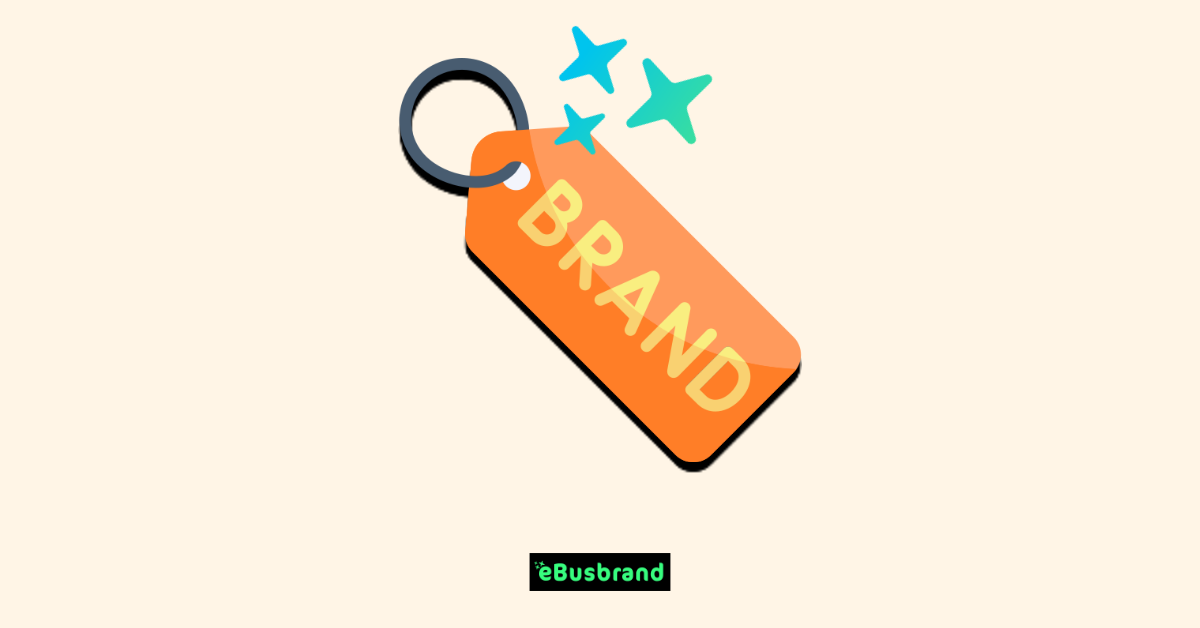When you hear brand names like Apple, Mercedes, BMW, or Nike, what comes to mind? For example, Apple is more than just an electronics company, Starbucks is more than a café, and Red Bull is not an ordinary energy drink. Do you know why?
All of this relates to the concept of a brand – formed and strengthened over the years until it reaches its current position, creating an image in your mind that goes beyond a regular product.
You might wonder what exactly a brand means and what essential terms and concepts are related to it. In this article, we will delve into the details so that you gain a clear understanding of this famous marketing concept.
What is a Brand?
A brand encompasses a set of intangible features and characteristics that distinguish one company or organization from another. It includes elements such as a name, logo, symbol, design, sound, and more.
A brand also represents the overall experience customers have when interacting with a company – as shoppers, regular clients, social media followers, or passersby. It evokes a feeling within the minds of customers or the targeted audience.
Remember the description we gave for Starbucks as "more than just a café"? That's the overall impression this company leaves on the audience.
What is Branding?
Branding is the process of research and development to integrate unique features or a set of features with your company's name. This enables consumers to associate these features with your brand.
In simple terms, branding is the process of creating a distinct name and image for your company or product in the minds of the target audience.
The Importance of Branding
Why is it essential to invest in branding and what benefits will you reap from it? As a product owner, you undoubtedly want to increase sales and purchases.
The good news is that a brand can be a crucial factor for consumers when making purchase decisions. It can even lead to higher prices for your products compared to competitors.
According to a survey by Nielsen in 2015, nearly 60% of shoppers consistently buy from brands they know, and 21% said they bought a product simply because they loved the brand.
Your brand gives your company an identity that goes beyond its products or services. It provides consumers with something they can emotionally connect with.
A strong brand makes your business unforgettable and brings pride to your employees. When you design a brand for your company, you not only give it an identity but also create a workplace with a good reputation and high appreciation.
Now that you understand the difference between Brand and Branding, let's explore the related terms and concepts you need to know to grasp the idea well.
The Brand Terms:
1. Brand Awareness:
This refers to how familiar the general public and the target audience are with your brand. High brand awareness indicates that your products or services are popular, noteworthy, and widely known.
2. Brand Recognition:
Brand recognition means the ability of consumers or customers to identify and distinguish your brand without seeing the company name. This can be achieved through your logo, company description, specific jingle, packaging, or advertisement. It goes hand in hand with the term Brand Recall, which refers to the ability to think of a brand without any visual or auditory cues.
3. Brand Trust:
Brand trust measures the strength of consumers' belief in your brand. Does your company fulfill its marketing promises? Keeping marketing promises is vital in a world where people feel less trust and are hesitant to place trust.
4. Brand Valuation:
This refers to the commercial assessment of your brand in the market and by users. This valuation is often derived from consumers' perception, appreciation, trust, and love for your brand, considering the value it provides through your products or services.
For instance, consider Lambda School, which innovatively tackles the issue of student loans in Western countries. In just two years, it secured $74 million in its Series C funding round—a substantial figure for a brand that started only two years ago, right?
This is where the value of a brand lies, as investors rush to seize such an opportunity when they realize it's worth it.
5. Brand Identity:
Earlier, we mentioned that a brand (Brand) consists of intangible characteristics in the minds of the target audience, differentiating some companies. Brand identity, however, includes all tangible elements that engage the five senses, such as music, colors, images, and product packaging (anything appealing to your senses associated with the brand).
To build a strong brand identity, focus on all customer interactions, from the logo to product materials and packaging.
This concept falls under "Brand Touch Points," referring to any consumer interaction or exposure to the brand.
6. Brand Essence:
Brand essence is the defining core attribute of a brand. It's an intangible trait that sets you apart and elevates you in the eyes of your target audience, making you stand "Out of the Crowd."
For example:
Coca-Cola's essence is happiness.
L’Oreal's essence is feminine confidence.
Volvo's essence is safety.
Visa's essence is ubiquity.
Red Bull's essence is adventure.
7. Brand Personality:
Brand personality encompasses the set of qualities that give a brand a human-like character. It's the process of personifying the brand.
Having a brand personality goes beyond identity, incorporating appearance, style, and human traits.
These elements create an emotional connection, influencing customer choices in favor of the brand that resonates with them and reflects their personality.
Many companies find forming a brand personality challenging, as it comprises five primary dimensions: Sincerity, Excitement, Competence, Sophistication, and Ruggedness.
While some struggle, others excel, developing superb marketing strategies around these fundamental dimensions.
A notable example is Red Bull, known for courage and extreme vitality.
Red Bull inspires two customer types: professional athletes facing tough challenges and fun-loving individuals seeking energy for a good time.
"Red Bull Gives You Wings," their famous slogan, epitomizes their focus on the brand rather than just the products. Sporting events and concerts foster strong bonds with customers.
To strengthen their brand, Red Bull organizes the exciting "Can You Make It" competition, where participants travel across Europe using Red Bull bottles for bartering their way for necessities.
How to create your brand personality?:
Having a distinct brand personality sets you apart from competitors. Creating it should be part of your brand's strategic discussion.
Consider how your brand's personality should appear.
A tip: Customers love your brand when it aligns with their character and aspirations. Understand your customers closely to create your brand personality, reflecting their personality and aspirations.
Create it using Jennifer Aaker's framework, defining traits based on your vision and customer aspirations.
8. Brand Vision:
Brand vision encompasses the underlying ideas driving the brand's future. It should align with and support your business strategy, differentiate you from competitors, resonate with customers, energize employees and partners, and inspire marketing programs.
Without a clear vision, the brand drifts aimlessly, leading to ineffective marketing efforts.
For instance, Tesla envisions the future, directing their efforts towards exploration and predicting future life.
Tesla plans to explore Mars and bring materials to Earth for a better future.
They design products transcending current limits, like electric cars and electronic chips, aligning with Elon Musk's goal of controlling the human mind.
These products, even beyond our wildest dreams from science fiction movies, are unexpected innovations.
9. Brand Voice:
Brand voice is the unique way an organization or company communicates. Some people mistakenly believed that Nokia's ringtone represented the brand voice, but that's incorrect.
Brand voice entails consistency in word choice, tone, and values when addressing the target audience or others. It conveys the company's personality to the external audience.
It's crucial to differentiate between brand voice and tone, as many people tend to confuse the two.
Let's emphasize an essential point: the brand voice remains constant, while the tone may vary.
To illustrate the difference further, consider this example: your voice as a person doesn't change, but your tone can vary depending on the situation, right?
Your tone when you're happy differs from your tone when you're sad, excited, or unenthusiastic.
Similarly, a brand is inspired by humans, so its voice remains consistent, but its tone may change when introducing a new product or interacting with diverse customers on social networks.
Remember, the tone varies to express different situations, so your customers should not feel that your brand's tone is uniform in all situations.
10. Brand Position:
This term refers to how customers perceive your product or company amidst competitors or the unique description your brand holds in your customers' minds. It creates a distinctive emotional connection.
For instance, Snickers chocolate doesn't market itself merely as a product to eat when you're happy or craving sweets. Instead, it promotes its product as the solution to hunger, as seen in their ads (Hungry? Grab a Snickers).
11. Brand Promise:
The brand promise indicates customers' expectations of what they will receive from your company, whether it's services or products. It may offer features that go beyond the basic problem it addresses in reality.
For example, Apple products have a symbolic aspect, where owners are associated with the elite and aristocratic class. As such, this promise from the company is to provide customers with this symbolic value through its products.
Conclusion
Building a brand is a long-term and well-thought-out process and strategy that takes place over several years, not an overnight transformation.
Now that you understand the key concepts and their differences, you can begin laying the groundwork to build your brand.



